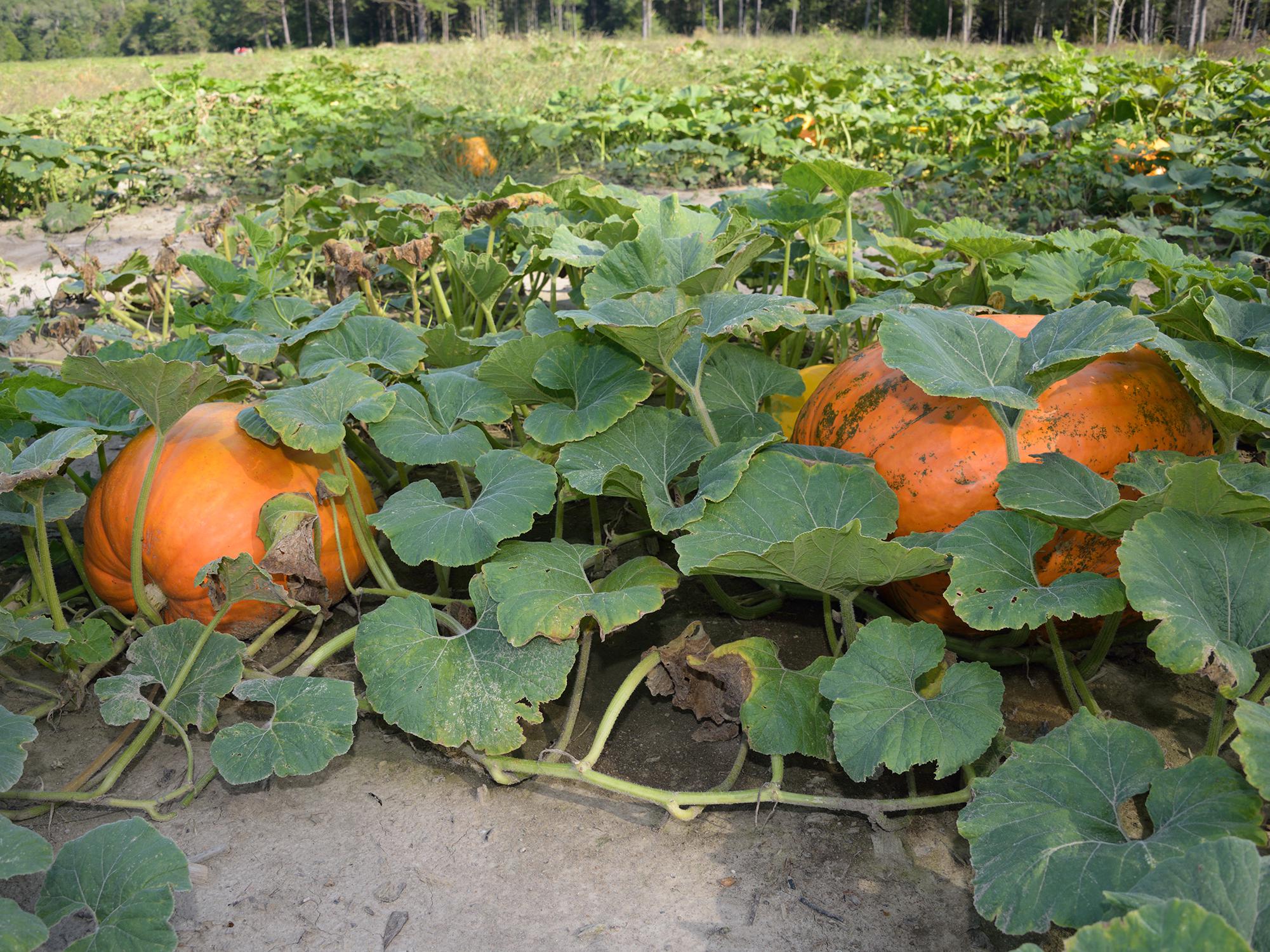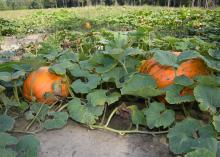Information Possibly Outdated
The information presented on this page was originally released on October 19, 2018. It may not be outdated, but please search our site for more current information. If you plan to quote or reference this information in a publication, please check with the Extension specialist or author before proceeding.
Summer weather provided good pumpkin conditions
STARKVILLE, Miss. -- Summer weather allowed Mississippi pumpkin growers to have a good harvest, but there still are not enough pumpkins grown in the state to meet fall demand for this colorful crop.
Josh Maples, an agricultural economist with the Mississippi State University Extension Service, said harvested pumpkin acreage in the state is lower than in years past.
“The U.S. Department of Agriculture reported just 135 acres of pumpkins were harvested in the state in 2012, when the last ag census was taken,” Maples said. “In 1997, that number was up to 213 acres of pumpkins.”
Reid Nevins, Extension agent in Lowndes County, also grows an acre of pumpkins in Monroe County. He said the state’s hot and humid climate makes growing pumpkins more difficult than it is farther north and in the Midwest.
“Moisture and humidity are the big things; heat matures them a bit faster, but the humidity can cause disease problems,” Nevins said. “Southerners don’t grow a lot of pumpkins because you have to spray them weekly for insects and disease.”
Pumpkins are plagued by squash bugs, squash vine borers, cucumber beetles and a few other insect pests. Diseases such as powdery mildew and downy mildew can be handled with regular applications of fungicide, but Nevins said some growers are battling white mold or belly rot because of wet conditions at harvest.
Deer also create many problems for pumpkin producers. Dwight Colson owns Country Pumpkins in Caledonia with his wife, Jean. He said their 22.5 acres of pumpkins faced the usual challenges this year, including deer.
“Deer eat the small seedlings, they eat the leaves off the vines, and then when the fruit comes on, they eat the fruit,” he said.
Colson has irrigation available in his fields and had to water nine times this year to meet the pumpkin’s moisture needs. He double crops his pumpkins after wheat harvest in June. He finely chops the wheat straw and then plants his pumpkins without tilling the soil.
“We like a lot of straw in the pumpkin field for three reasons: It helps control weeds, it helps conserve moisture, and we don’t have to wash the pumpkins when we harvest them,” Colson said.
This year, he had someone bring 24 beehives to the farm, a practice that Colson said has yielded a better pumpkin crop.
Don Mitchell, owner of Mitchell Farms in Collins, grows 73 acres of pumpkins. He has grown them since 2007 when he began his agritourism operation.
“This was pretty much a perfect season,” Mitchell said. “It was a little hot, but they did OK. We had adequate rainfall but not excessive rainfall. That’s the main thing. Last year, we had too much rain.”
Although 90 percent of his crop is on irrigated land, he did not have to use it because of the timely rains. He sprays weekly for insects and disease.
“It doesn’t keep it under control, but it helps,” he said. “Insects can be a huge problem if you don’t stay on top of them.”
Mitchell grows about 40 varieties of pumpkins from the size of golf balls to as big as huge beach balls. They come in a wide variety of colors and shapes.
There are no fixed pumpkin prices, and although they can be eaten, most in the state are sold for decoration. Pumpkins are priced on size, and growers often get as much as $25 each for the very large ones and as little as 50 cents apiece for the tiny ones. Most jack-o-lantern sizes range from $3 to $8, with the average carving-size pumpkin being about $5.








